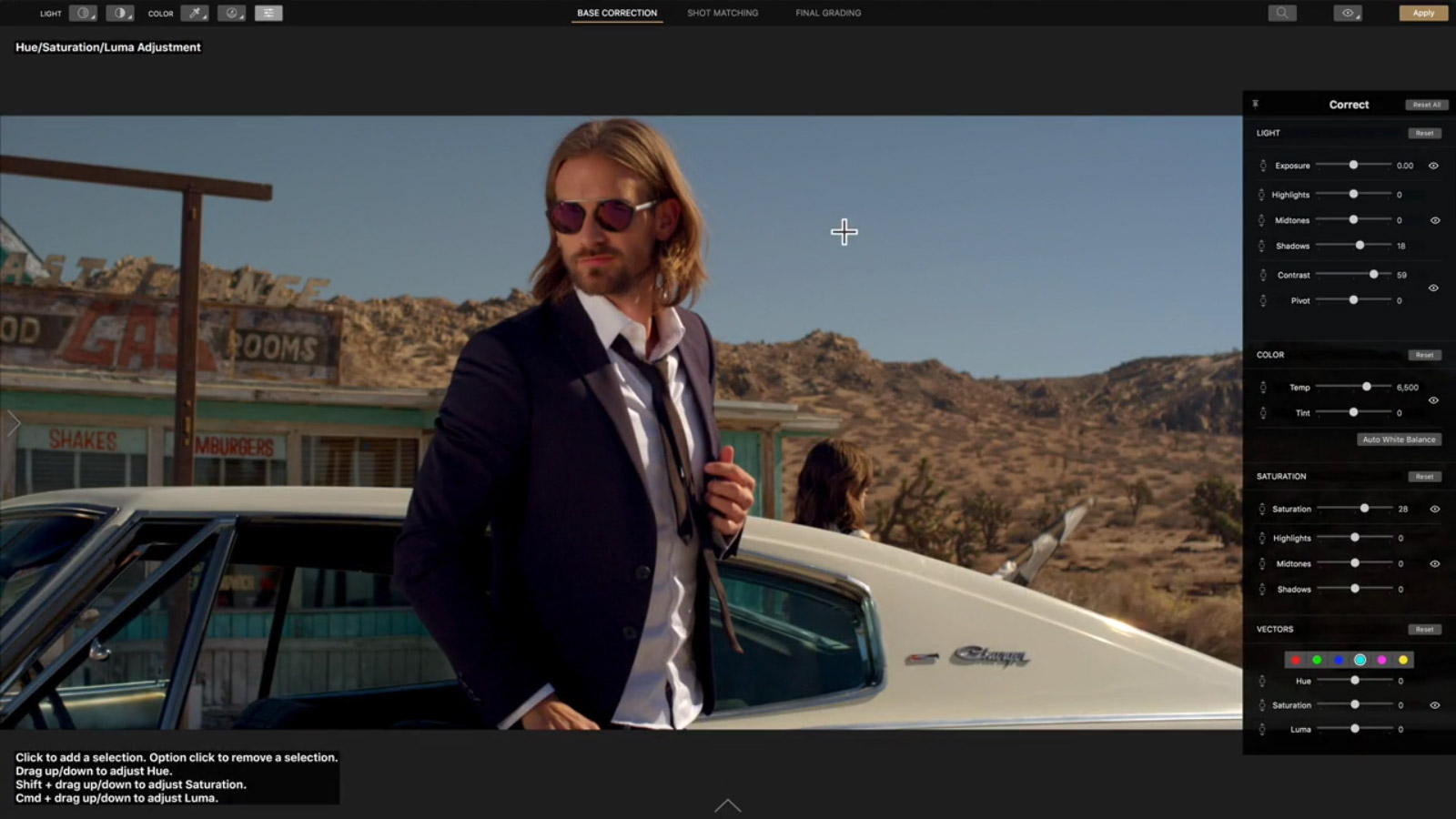


Working with color used to take place entirely on the lighting and film stock during production. Different colors can convey a certain feeling or can draw the audience’s attention to a specific point on the screen. Typically, the “less is more” approach works a treat here as it once again reinforces the idea that you simply need to apply the right effect at the right time by avoiding overdoing it to achieve the optimal results.Color plays a major role in how we interpret video content. You can experiment further with the mid tones and highlights by applying the same technique and see what you can get on that side. This is simple, yet extremely powerful way to make your footage look more natural and pleasing to the eye instead of just changing the saturation of the overall image.

The difference is obvious and can be spotted right off the bat.

Now try to apply the same trick but this time, use the last node with the decreased shadows’ saturation by keeping it active at the end of the nodes’ chain. If you simply add a regular node and push the saturation of the shadows directly by using the Lift Colour Wheel inevitably you will affect the saturation of both the mid tones and highlights as well. Create a new Node, go to Curves, navigate to Luma vs Saturation and take the saturation out of the shadows and increase it in the mid tones. To make this simple technique work, you need to create a node and take the saturation down by using the curve as shown in the video tutorial. For example, here’s how by modifying a simple curve you can control the saturation of your image and make your footage look more natural and cinematic.įirst, it’s really important to understand how to control the saturation of your image. Fortunately, DaVinci Resolve is extremely powerful colour grading software that puts in your hands all the tools and assets you will ever need to achieve the desired look and aesthetics for any project. The ability to control each section of the image individually is extremely important and separates the professional work of a seasoned colorist from the one of a less experienced person. Usually, the shadows of the image are less saturated than the mid tones and the highlights, just like the highlights are more saturated than the mid tones. Instead, you should modify each part of the image accordingly. Generally, if you want to colour grade your footage more professionally and achieve a certain more stylized look you should approach every part of your image that needs to be colour graded separately. For instance, the saturation of your images shouldn’t be treated as one value or parameter.


 0 kommentar(er)
0 kommentar(er)
